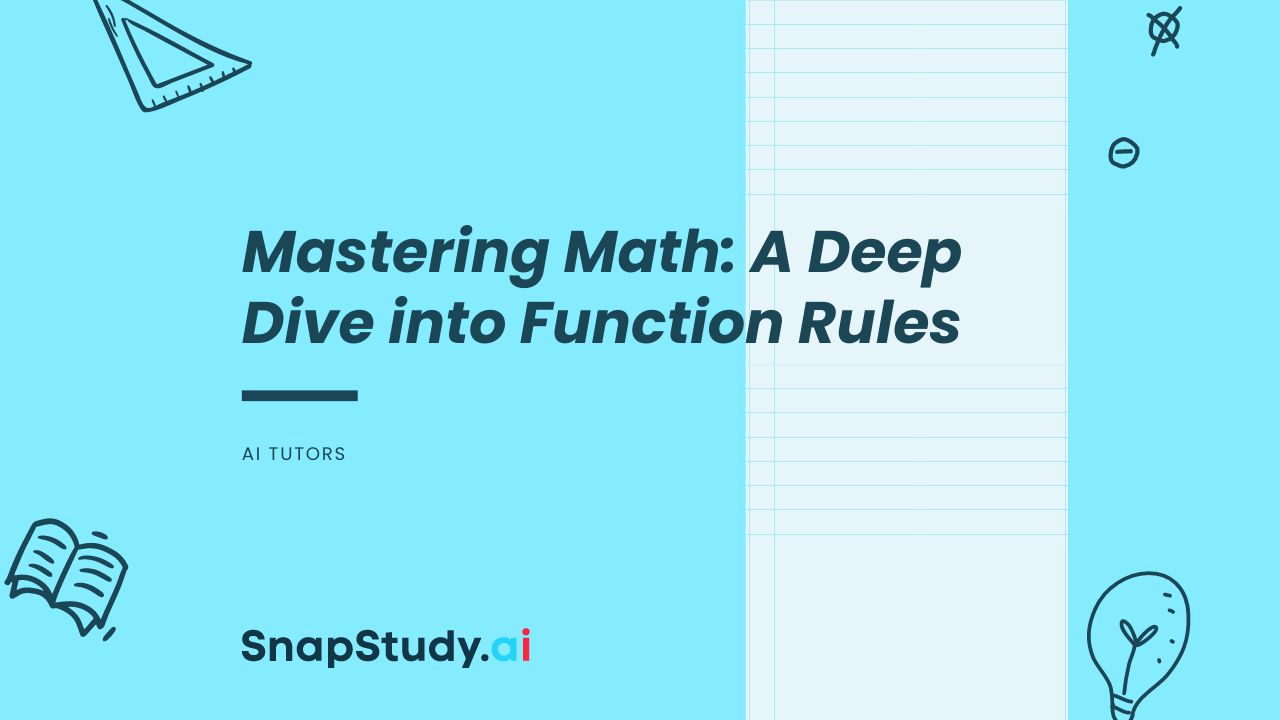In the vast and intricate world of mathematics, ‘function rules’ emerge as the guiding principles that dictate how a function behaves. These rules, often overlooked, hold a prominent position when it comes to deciphering the language of mathematics. Mastering these rules can pave the way to understanding more complex mathematical concepts, forming a solid foundation for advanced problem-solving.
What are Function Rules?
Function rules, also referred to as functional relationships, are equations that explicitly define the relationship between input values and output values. To put it in simpler terms, they dictate what happens when you input a value into a function, akin to a recipe that determines what comes out of the oven when you put in certain ingredients. Grasping function rules is like learning the syntax of a new language – it is the key to understanding and creating meaningful mathematical expressions.
Types of Function Rules
There are several types of function rules, each with its unique set of behaviors and characteristics. These types are like different genres in literature, each having its own style and rules. Some of the most common types include:
- Linear Functions: Linear functions are the simplest type of function rules. These functions have a constant rate of change, which means the value of the function changes by the same amount for every unit change in the input. The graph of a linear function is a straight line, hence the name. The function rule for a linear function is typically in the form y = mx + b, where ‘m’ represents the slope of the line (rate of change), and ‘b’ is the y-intercept, which is the value of y when x is zero.
- Quadratic Functions: Quadratic functions are a step up from linear functions in terms of complexity. These functions have a variable rate of change, and their graph is a parabola. The function rule for a quadratic function is typically in the form y = ax^2 + bx + c, where ‘a’, ‘b’, and ‘c’ are constants. The ‘a’ term creates the parabola, the ‘b’ term shifts it left or right, and the ‘c’ term moves it up or down.
- Exponential Functions: Exponential functions are fascinating as they represent growth or decay at a rate proportional to their current value. These functions are often used to model population growth, radioactive decay, and interest accumulation. The function rule for an exponential function is typically in the form y = a*b^x, where ‘a’ is a constant that represents the initial amount, and ‘b’ is the base of the exponent, which determines the rate of growth or decay.
- Logarithmic Functions: These functions serve as the inverse of exponential functions. They are used when the rate of change of a quantity is proportional to the current quantity’s value. The function rule for a logarithmic function is typically in the form y = log_b(x), where ‘b’ is the base of the logarithm. These functions are crucial in many scientific calculations.
Understanding Function Rules
Understanding function rules involves more than just memorizing equations – it requires a deep comprehension of how to interpret and manipulate these equations. This interpretation and manipulation are similar to understanding and creating poetry in a language. You need to understand the words, the grammar, and the context. For function rules, this requires a solid understanding of algebra and the specific behaviors of different types of functions.
Conclusion
Function rules are the backbone of many mathematical concepts. They are the rules of the game, the blueprints of mathematical structures. By mastering these rules, you can gain a deeper understanding of how to solve problems and predict outcomes in a variety of mathematical contexts. These rules, once mastered, will become tools in your mathematical toolbox, ready to be used to build solutions to complex problems or to predict patterns in numerical data. So, buckle up and embark on this journey of mastering math through a deep dive into function rules!





